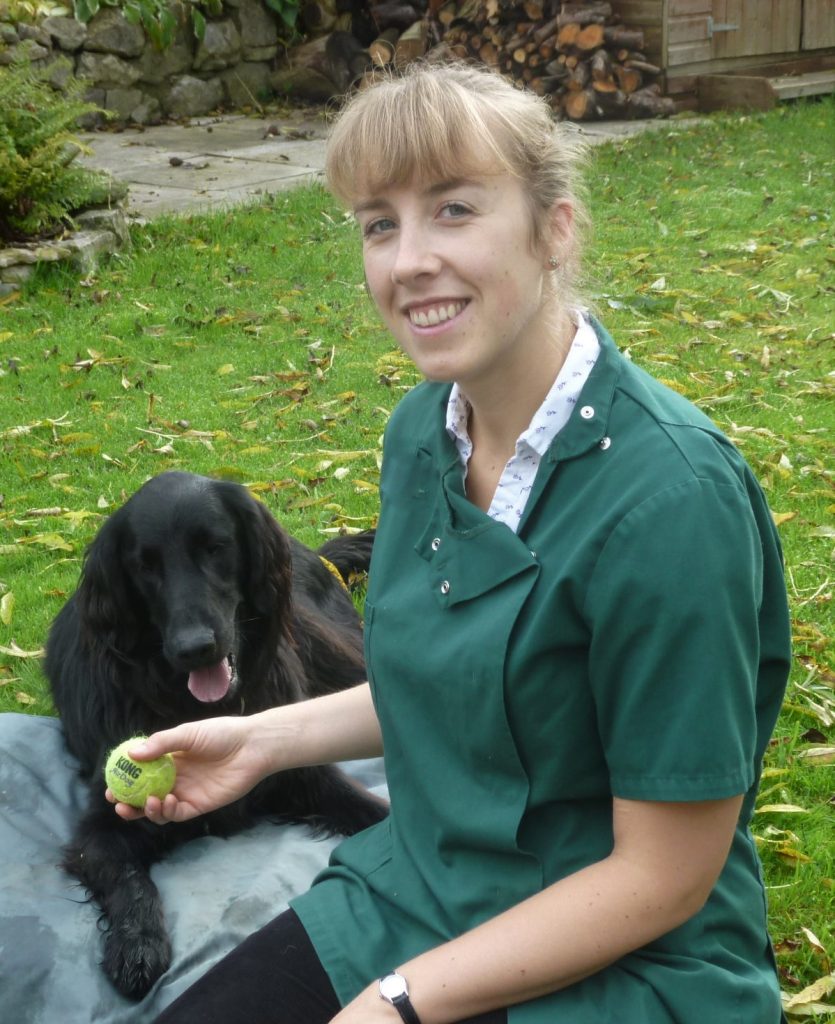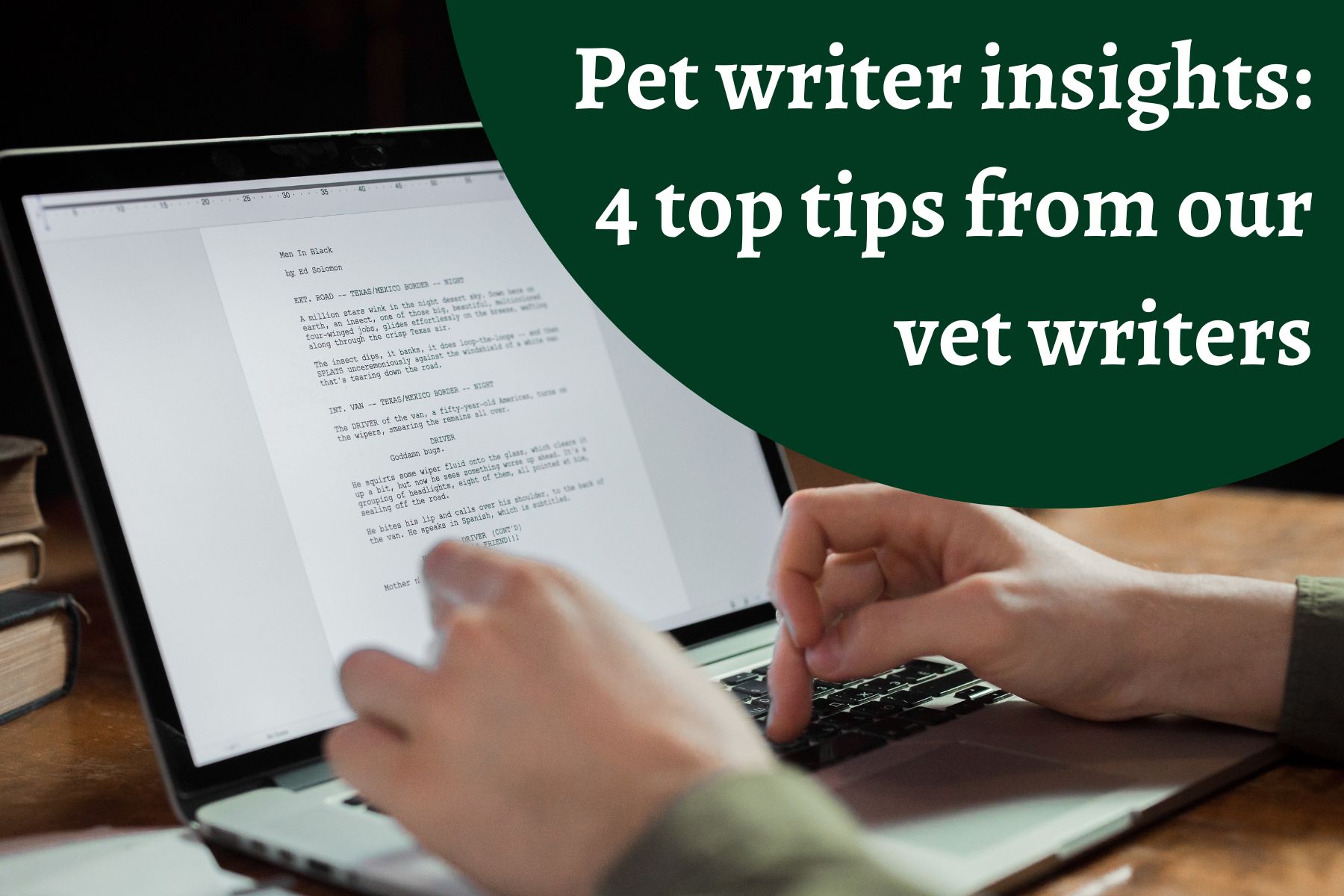The Veterinary Content Company is nearly four years old, but the combined experience of our pet writers is over 60 years! We decided to celebrate our upcoming birthday by asking 4 of our best pet content writers for their top tips, and they didn’t disappoint.
Key Takeaways
– Keep your content factually correct by using a Subject Matter Expert (SME) to write or check the content
– Have a clear stance with evidence to support it
– Use personal experience and stories to enrich your content and provide connection
– Don’t just state facts, explain and show pet owners how the information is important to them
Vet writer Emma Rogers-Smith has been writing for us for nearly three years and in that time has authored over a hundred articles. She shared her top tip:

Make sure your content is factually correct (it’s better for SEO and your readers!)
Writing engaging pet content can be tricky; that much is true! For me, as a veterinary pet content writer, one of the most important things is ensuring content is factually correct. Having knowledgeable content backed up by evidence will help build trust with your readers and keep their pets safe. Knowing whether an online resource is fact or opinion is undoubtedly getting more challenging, so try to go back to the original scientific papers or reference articles written by experts in the field (with the qualifications to back it up!). If you are unsure about the truth behind what you’re reading, reach out to the experts for input as needed. Sorting through fact from fiction in the pet content world is where having an experienced veterinary content writer can be a hugely helpful asset!”
Next, we asked Dr Rebecca MacMillan, pet vet and writer. Becky has been writing for us since 2020 on all pet vet subjects. She’s also one of marketing bods, so writes for our knowledgebase. She had the following tip:
Have a clear, evidence-based stance on matters to build a loyal following
Using a veterinary expert as your pet content writer means that you will be getting up-to-date, professional advice. Vets and veterinary nurses have professional integrity, meaning that anything we recommend will be in the very best interest of the animal and there is no personal agenda. So, my top tip is to use a writer who is happy to take a stance on important matters, providing factual information to back their points up. This ensures that your website is always a credible source of information and becomes the trusted ‘go-to’ source for pet owners. By having a clear stance, backed up with evidence, you’ll build a loyal following of pet owners.

The next vet in the firing line was Dr Jnanee Krishnasamy. Jnanee lives in Singapore and has been veterinary copywriting for The Veterinary Content Company for two years now. Jnanee does a fantastic job of explaining complex topics for pet parents.

Enrich your pet content with personal stories
With hordes of pet content writers roaming the Internet, it’s no easy task to make your pet content stand out! However, you can warm your readers’ hearts by adding personal stories to your pet content. In fact, you could even write an article with pet content as a personal story by itself. People love personal stories – especially success stories – in their content, and pet content is no different. You could talk about pets that you’ve helped with the tips in your pet content e.g. rearing orphaned newborn kittens to adulthood, successfully rehoming rescue pets with anxiety and so on. Personal stories also add legitimacy to your pet content, as you show readers that you’ve “lived” your pet content and know that it’s authentic (and that you don’t just cobble facts together to write your pet content!)
The last pet writer we asked was Dr Hannah Godfrey. Hannah has been writing for us for over three years and is one of our senior writers. She’s great at writing for pet owners but has also dabbled in marketing and writing for other vets – and she excels at it all! Hannah regularly writes for our pet marketing blog here, and knows exactly what she’s talking about when it comes to pet content writing. Her tip was:
Show, don’t tell to keep your reader engaged
Keeping your readers engaged isn’t always easy, especially if the topic you’re writing about is quite technical or scientific. It’s important to steer away from listing facts and statistics one after another, as this can be challenging to read. You can improve readability by ‘showing’ your audience the information in your storytelling. Seeing how the information is applied in reality will help keep your reader interested and improve their understanding, for example, instead of stating “Onions and other alliums cause Heinz body anaemia in dogs” you could say “If your dog eats onions or other plants from the allium family, they could become anaemic. This is because alliums can damage your dog’s red blood cells, a condition known as Heinz body anaemia.”

Find a pet content writer with The Veterinary Content Company
With those top tips in mind, you might feel ready to set off and write your pet business blog. But if you’ve just realised what a huge job writing a good pet blog will be, why not try outsourcing your content writing to an expert? It’s super easy to work with us – all we need is a title and a wordcount to aim for, and we’ll turn around an amazing article using modern SEO techniques. We also offer free consultations with our senior team so we can get to the bottom of your pet marketing troubles and work out how best to help.
But if you want to have a go yourself, we don’t blame you. Our Knowledgebase should give you more information on all pet business digital marketing topics!


